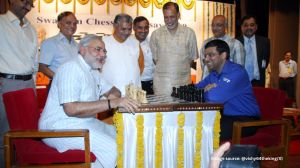Crackers And Common Sense
It was a truth universally acknowledged that those who burst the loudest crackers for the longest period of time were the ones who had ce...

It was a truth universally acknowledged that those who burst the loudest crackers for the longest period of time were the ones who had celebrated Diwali best of all. This year that nostrum no longer held true. Indeed, the festival season was marked by an unprecedented display of social concern.
For years, social activists had decried the flagrant abuse of child labour in the manufacture of firecrackers; for years, environmentalists had tried to highlight the dangers of the reckless burning of such devices and the effect it had on the ambient air quality of cities everywhere; for years, judges have ruled that Diwali celebrations must not be allowed to intrude on other people’s right to some neighbourhood peace and quiet. This time there was some evidence that these various messages had finally gone home.
What helped, of course, were the public campaigns launched by various schools, colleges and social institutions all over the country. In Delhi, for two months before the festival season, school children — including those who are handicapped — campaigned on the issue. They even took to the streets, forming human chains and holding placards with messages like, “Crackers thrill but it can sometimes kill” or “Cracker free Diwali/ Happier Diwali”. That Diwali can sparkle without the mandatory attack on the ears, was the substance of the campaign.
The consumer in this case is, more often than not, a youngster not given to deliberating on the philosophical aspects or social repercussions of his/her behaviour. The schools campaign worked because it was not unnecessarily didactic in that it did not throw the rule book at the students, but gently encouraged them to locate themselves and their actions within a social context and perceive for themselves the consequences of the choices they make as consumers.
What did, clearly, bring an emotional edge to the campaign was the child labour involved in the manufacture of firecrackers. It’s difficult to arrive at the number of children involved in this trade, but conservative estimates place it at one lakh. They work in the most abysmal conditions — long hours spent in crowded, dingy rooms for a pittance of a daily wage.
The campaign succeeded in getting privileged urban children to perceive the links between their lives and those of the young workers. Campaigns like this will do more to abolish child labour in this country than the pious resolutions and lofty speeches of politicians. Already some manufacturers of fireworks, sensitive to the economic consequences of such campaigns, have started carrying labels on their products specifying that they were made by adults. This is a significant beginning. When Diwali sparkles with social concern, it is truly good news.
Photos



- 01
- 02
- 03
- 04
- 05




























